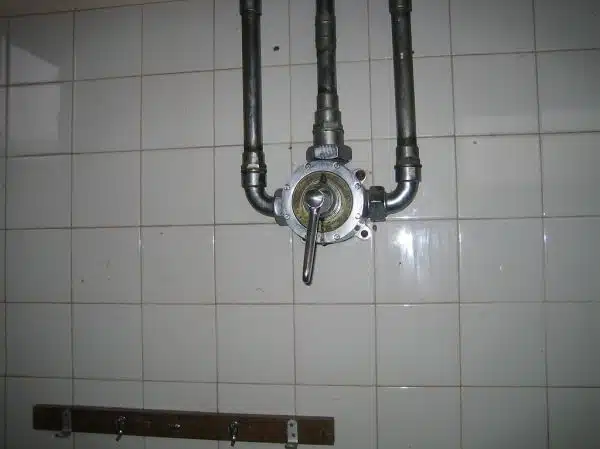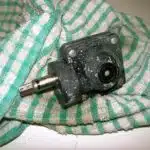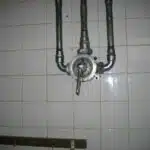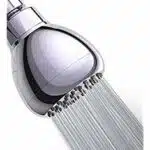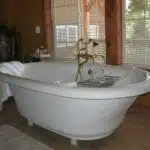Shower valves that protect against burns have become an essential component in modern-day bathrooms. The demand for such shower valves has increased due to the rising number of burn injuries caused by hot water. As a shower valve safety expert, I have witnessed first-hand the devastating effects of hot water burns and understand the importance of having reliable shower valves installed in homes and public facilities.
Studies have shown that burns from hot water account for a significant percentage of all burn-related injuries. In most cases, these injuries occur due to the lack of proper temperature control settings on shower valves. Shower valves that protect against burns are designed to prevent scalding by limiting the maximum temperature of the water flow. These innovative devices not only provide added safety but also offer peace of mind to users, especially those with children or elderly family members using bathrooms regularly. Therefore, it is crucial that homeowners and facility managers invest in high-quality shower valves that prioritize user safety.
The Importance Of Shower Valve Safety
According to recent statistics, an average of 500,000 people in the United States suffer from hot water burns annually. Preventing burns is a crucial component of shower valve safety. Safety measures should be taken into consideration to ensure that individuals do not fall victim to the potential dangers associated with hot water.
One of the ways individuals can prevent burns while showering is by installing anti-scald shower valves. These valves regulate the temperature of hot water and prevent it from reaching scalding temperatures. This safety measure ensures that individuals can enjoy their showers without fearing for their safety.
Another important safety measure that can be used is educating individuals on how to safely use showers. This education includes understanding the maximum safe temperature for hot water and how to adjust it accordingly to avoid potential burns. It also involves teaching individuals how to test the water temperature before entering a shower and avoiding sudden changes in water temperature.
Understanding hot water burns is critical in preventing them from happening. The next section will provide an overview of how hot water burns occur and what factors contribute to their severity. By understanding this information, individuals can make informed decisions about how best to protect themselves from the risks associated with hot showers.
Understanding Hot Water Burns
Hot water scalds are a serious concern, especially for young children and the elderly. Burns can occur within seconds of exposure to hot water that is at a temperature above 140°F. These burns can lead to severe pain, scarring, and even death. It is essential to take precautions to prevent hot water burns in your home.
Preventing burns from hot water starts with ensuring that your shower valves are equipped with the necessary safety features. A pressure-balancing or thermostatic shower valve can help regulate the temperature of the water coming out of your showerhead, preventing sudden spikes in temperature that can cause scalding. Additionally, installing an anti-scald device on your shower valve can provide an extra layer of protection against burns.
It’s also important to educate yourself and your family about hot water safety. Teach young children never to touch hot water or turn on the faucet without adult supervision. You should also be mindful when bathing infants and young children by testing the bathwater before placing them in it. Following these simple steps can help prevent hot water burns in your home and keep you and your loved ones safe from harm.
As we have seen, preventing burns from hot water is crucial in any household, particularly one with young children or elderly individuals. While ensuring that your shower valves have the necessary safety features is an excellent first step, education is also key. In our next section, we will discuss the dangers of unprotected shower valves and how they can contribute to burn injuries in the home.
The Dangers Of Unprotected Shower Valves
Understanding the devastating effects of hot water burns is crucial in preventing scalding accidents. It only takes a few seconds to cause severe damage to the skin, and children and elderly individuals are particularly vulnerable. While most people are aware of the dangers of hot water in their homes, not many understand the importance of temperature control when it comes to shower valves. These seemingly harmless fixtures can cause serious burns if left unprotected.
The dangers of unprotected shower valves cannot be overstated. Shower valves that lack temperature control can lead to a host of problems, including burst pipes and severe burns. In some cases, these burns can result in long-term physical and emotional trauma. This is why it is vital to ensure that your shower valves are adequately protected against scalding accidents.
As a shower valve safety expert, I cannot stress enough the importance of temperature control in preventing scalding accidents. By installing shower valves that protect against burns, you take an important step towards ensuring the safety of your loved ones. With these protective measures in place, you can enjoy peace of mind knowing that your family is safe from the dangers of unprotected shower valves. In the next section, we will explore how shower valves work and how they can be installed for optimal protection against scalding accidents.
How Shower Valves Work
Shower valves are essential components of any bathroom as they regulate the flow and temperature of water. They work by controlling the mixing of hot and cold water, ensuring a comfortable shower experience. Shower valves come in many different types, each designed to suit specific needs. However, regardless of the type, it is crucial to maintain them regularly to ensure their longevity.
Shower valve maintenance is critical for optimal operation and safety. Regular cleaning can prevent mineral buildup that could impede water flow or damage the valve’s seals. It is also essential to check for any leaks or drips, which could be a sign of a faulty valve cartridge or worn-out gaskets. Furthermore, malfunctioning shower valves can result in scalding accidents, highlighting the importance of regular maintenance.
Troubleshooting shower valve issues requires some technical knowledge and expertise. Some common problems include reduced water pressure, inconsistent temperature regulation or no hot water at all. Such issues may arise from incorrect installation, blocked pipes or damaged valves. In such cases, it is vital to seek professional assistance from a certified plumber to fix these problems promptly.
As we have seen above, regular maintenance and troubleshooting are fundamental aspects of maintaining safe and functional shower valves. Neglecting these tasks could jeopardize your safety and comfort while in the bathroom. In the next section, we will discuss various types of shower valves available on the market today and their unique features.
Types Of Shower Valves
As a shower valve safety expert, it is crucial to understand the different types of shower valves available in the market. One important aspect to consider when choosing a shower valve is the type of finish it has. There are various types of finishes, including chrome, brushed nickel, oil-rubbed bronze, and polished brass.
Chrome finishes are popular among homeowners due to their durability and low maintenance. They are less likely to tarnish or corrode compared to other finishes. Brushed nickel finishes offer a sleek and modern look that complements various bathroom styles. Oil-rubbed bronze finishes give a rustic feel while polished brass provides an elegant touch.
Another critical factor to consider when selecting a shower valve is the type of valve itself. The most common types include thermostatic valves, pressure-balancing valves, and manual valves. Thermostatic valves regulate water temperature automatically, ensuring protection against scalding or freezing temperatures. Pressure-balancing valves maintain consistent water pressure even if there is a change in water supply pressure levels. Manual valves require manual adjustment of both temperature and pressure.
Each type comes with its own set of pros and cons that must be considered before making a final decision on which to purchase for your bathroom needs. By understanding the different types of shower valve finishes and valve types available on the market today, homeowners can make informed decisions based on their preferences and needs for their home’s safety and satisfaction. In the next section, we will discuss factors individuals should consider when choosing a shower valve that best fits their specific needs within their budget constraints without sacrificing quality or safety standards.
Factors To Consider When Choosing A Shower Valve
When it comes to choosing a shower valve, there are several factors to consider. One of the most important is the material of the valve itself. Shower valves can be made from a variety of materials, including brass, stainless steel, and plastic. Brass is often considered the best option because it is durable and resistant to corrosion. Stainless steel is also a good choice for its durability, while plastic valves are typically less expensive but may not last as long.
Another important consideration when choosing a shower valve is water pressure and flow. The valve you choose should be able to handle the water pressure in your home without causing any problems or leaks. It’s also important to consider the flow rate of your showerhead and make sure that it will work well with the valve you choose. A professional plumber can help you determine what type of valve will work best for your specific needs.
Ultimately, choosing a shower valve that meets your needs and preferences will depend on several factors. It’s important to carefully consider each aspect of the valve before making a decision. By taking into account factors such as materials and water pressure and flow considerations, you can select a high-quality valve that will provide reliable performance for years to come.
As we have seen, selecting an appropriate shower valve requires careful consideration of various aspects such as materials used in making them and their ability to handle water pressure and flow rates. However, one crucial factor that must not be overlooked is safety concerns such as protection against burns caused by hot water during showers. In this regard, special shower valves designed with safety features such as anti-scald technology play an essential role in ensuring safe bathing experiences for all users regardless of age or physical conditions.
The Benefits Of Shower Valves That Protect Against Burns
- Temperature control is a key benefit of shower valves that protect against burns, as they help ensure that the water temperature does not exceed a safe threshold.
- Furthermore, these valves are able to maintain the temperature of the water consistently, ensuring a comfortable showering experience.
- The safety of these valves cannot be overstated, as they help prevent severe scalding from hot water that can cause severe and permanent injuries.
- Parents of small children and elderly people in particular can benefit from these valves, as they can be assured that their loved ones are protected against accidental hot water burns.
- Anti-scalding devices can also be used in combination with shower valves that protect against burns, providing an additional layer of safety.
- In summary, the installation of shower valves that protect against burns can provide both safety and comfort while showering.
Temperature Control
When it comes to shower valves that protect against burns, temperature control is a crucial factor to consider. As a safety expert in this field, I cannot stress enough the importance of having a temperature sensor installed in your shower system. This device helps regulate the water temperature and prevent scalding accidents from occurring.
Furthermore, thermostatic valve settings are also essential for maintaining a safe and comfortable shower experience. These valves ensure that the water remains at a constant temperature, even when there are fluctuations in the water supply. By adjusting the thermostatic valve settings, you can customize your shower experience to meet your specific needs while keeping safety in mind.
Investing in a shower valve that prioritizes temperature control is not only beneficial for yourself but also for your loved ones. Accidents can happen anytime, but by taking preventive measures such as installing a temperature sensor and using thermostatic valve settings, you can significantly reduce the risk of burns and other injuries. Remember, safety should always be a top priority when it comes to personal hygiene routines like taking a shower.
Comfort
As a safety expert in the field of shower valves, I understand that comfort is just as important as safety when it comes to personal hygiene routines. A comfortable shower experience can make a significant difference in one’s day-to-day life and promote overall well-being. This is why investing in a shower valve that prioritizes both temperature control and water pressure can provide numerous benefits.
When it comes to comfort, water pressure plays a crucial role in delivering an enjoyable shower experience. A high-pressure showerhead can provide a soothing massage-like effect, while low-pressure water flow can feel underwhelming and unsatisfying. By installing a shower valve with adjustable water pressure settings, you can customize your shower experience to meet your needs and preferences.
Moreover, temperature control is also essential for promoting comfort during showers. With thermostatic valve settings, you can maintain a consistent water temperature throughout your entire shower. This will prevent sudden changes in temperature that could cause discomfort or even burns. By prioritizing both temperature control and water pressure settings, you can ensure a safe and enjoyable shower experience every time.
Safety
As a safety expert in the field of shower valves, I understand that preventing burns is a crucial aspect of promoting safe and comfortable shower experiences. Shower valve temperature control plays a significant role in protecting against burns, especially for children and elderly individuals who may have sensitive skin or reduced sensation. Safety regulations require that shower valves be designed to prevent sudden changes in water temperature and provide a reliable means of controlling water temperature.
By investing in a shower valve that protects against burns, you can avoid the risk of scalding injuries during your daily routine. Thermostatic shower valves are designed with advanced temperature control mechanisms that maintain a consistent water temperature throughout your entire shower. This prevents sudden fluctuations in water temperature caused by flushing toilets or turning on other faucets, which can lead to dangerous hot water spikes.
Installing a shower valve that meets safety regulations for preventing burns is not only beneficial for your own well-being but also for those around you. It provides peace of mind knowing that you are taking proactive steps to protect yourself and your loved ones from potential harm. By prioritizing safety when selecting your shower valve, you can enjoy a comfortable and worry-free shower experience every time.
How Shower Valves That Protect Against Burns Work
Shower valves that protect against burns are a crucial safety feature in any bathroom. These specialized valves prevent scalding by controlling the temperature of the water and shutting off automatically if the temperature exceeds a certain limit. This technology has been refined over the years to include advanced features that make showering safer and more enjoyable.
Shower valve design is an essential aspect of anti-scald technology. The most common type of valve used in homes today is the pressure-balancing valve, which works by adjusting the cold water flow when there is a sudden increase in hot water pressure. Another type of valve, known as thermostatic mixing valve, uses a sensor to monitor the temperature of the water and adjust it accordingly. Both types of valves are effective at preventing burns.
Installing a shower valve that protects against burns is an investment in your family’s safety and well-being. Here are three reasons why you should consider installing one:
- Peace of mind: With a shower valve that prevents scalding, you can rest easy knowing that your loved ones are safe from hot water burns.
- Convenience: Anti-scald technology allows for quick and easy adjustments to water temperature without having to worry about accidental scalding.
- Increased home value: Adding safety features like a shower valve with anti-scald technology can increase your home’s value and appeal to potential buyers.
As with any important purchase, there are features to look for in shower valves that protect against burns. The next section will cover these features in detail, so you can make an informed decision when selecting a product for your bathroom.
Features To Look For In Shower Valves That Protect Against Burns
Temperature limiters are designed to prevent water temperatures from reaching scalding levels, which is essential for shower valve safety. Anti-scald valves are another feature to look for, as they will reduce the flow of hot water if the temperature reaches a certain level. Pressure balance valves are also important, as they maintain a balanced pressure between hot and cold water to reduce the risk of scalding. Anti-shocking systems are a great addition to any shower valve, as they protect against sudden changes in water temperature.
Temperature Limiter
As a shower valve safety expert, one of the most important features to look for in shower valves that protect against burns is a temperature limiter. A temperature limiter controls the maximum temperature of the water and prevents it from getting too hot, which can cause scalding and burns. This feature is especially important in homes with children or elderly individuals who may be more vulnerable to burns.
When considering the pros and cons of different brands of shower valves with temperature limiters, it’s important to choose a model that has been tested and certified by industry standards organizations. Some of the best brands include Kohler, Delta, and Moen. These brands offer a range of styles and finishes to suit any bathroom decor while providing reliable protection against burns.
While installing a shower valve with a temperature limiter may require some initial investment, it can ultimately save homeowners money on medical bills and prevent serious injuries. By prioritizing safety features like temperature limiters when selecting shower valves, homeowners can ensure that their families are protected from scalding water and enjoy peace of mind while bathing.
Anti-Scald Valve
Another important feature to look for in shower valves that protect against burns is an anti-scald valve. An anti-scald valve works by regulating the water temperature and preventing sudden changes in hot or cold water flow. This feature is particularly important for households with young children, elderly individuals, or people with disabilities who may not be able to quickly adjust the water temperature.
The benefits of installing an anti-scald valve include a reduced risk of burns and scalds, increased safety and comfort during bathing, and improved energy efficiency. Anti-scald valves can also help prevent damage to plumbing fixtures caused by extreme temperatures. Homeowners should consider factors such as the size of their household, water pressure, and type of plumbing system when selecting an anti-scald valve.
When installing an anti-scald valve, it’s essential to follow all manufacturer instructions carefully and hire a professional plumber if necessary. Homeowners should also check local building codes to ensure compliance with regulations regarding shower valves and other plumbing fixtures. By choosing a reliable brand and ensuring proper installation, homeowners can enjoy the peace of mind that comes with knowing their family is safe from scalding water while bathing.
Installation Of Shower Valves That Protect Against Burns
Shower valves that protect against burns are essential to ensure the safety of all users. It is crucial to select a shower valve that is compatible with the plumbing system, as well as the type of showerhead and faucet being used. Failure to select a compatible valve can result in reduced functionality or even complete failure of the valve, leaving users at risk for burns.
Professional installation of shower valves that protect against burns is highly recommended. A professional installer can assess the plumbing system, identify any potential compatibility issues, and ensure proper installation and calibration of the valve. In addition, a professional installer can provide valuable tips for maintaining and troubleshooting the valve, such as adjusting water temperature limits and replacing faulty components.
When installing a shower valve that protects against burns, it is important to consider both safety and functionality. Ensuring compatibility with the plumbing system and seeking professional installation can help ensure optimal performance and longevity of the valve. With proper installation and maintenance, users can enjoy safe and comfortable showers without fear of accidental burns.
Transition: While proper installation is crucial for ensuring safety in the use of shower valves that protect against burns, regular maintenance and upkeep are equally important. In the next section, we will discuss some tips for maintaining your shower valve to keep it functioning properly over time.
Maintenance And Upkeep Of Shower Valves That Protect Against Burns
As an expert in shower valve safety, I understand the importance of not only installing the proper valves but also maintaining them regularly. While some may argue that maintenance is tedious and unnecessary, it is crucial to ensure the continued protection against burns.
Regular maintenance involves checking for any leaks, ensuring all parts are functioning correctly, and cleaning any build-up or debris. Neglecting these tasks can lead to malfunctions and ultimately compromise the safety of your shower valve.
To help make maintenance easier, here are four tips to keep in mind:
- Schedule regular check-ups with a professional.
- Keep a record of all maintenance performed.
- Use only approved replacement parts.
- Educate yourself on proper usage and handling.
In addition to regular maintenance, it’s essential to take safety precautions when using your shower valve. Always test the water temperature before entering the shower and never leave children unattended in the bathroom. By implementing these measures, you can ensure that your shower remains a safe and enjoyable experience for all who use it.
Despite their importance, there are still common misconceptions about shower valves that protect against burns. In the next section, we will discuss these misconceptions and provide accurate information so that you can make informed decisions regarding your shower valve safety.
Common Misconceptions About Shower Valves That Protect Against Burns
Common misconceptions about shower valves that protect against burns can lead to serious safety issues in the bathroom. Many people believe that these valves are unnecessary or overly expensive, but this couldn’t be further from the truth. In reality, investing in a shower valve that protects against burns can provide countless benefits for individuals and families alike.
One of the primary benefits of these valves is their ability to regulate water temperature and prevent scalding. This means that parents can feel more comfortable allowing their children to bathe independently, without worrying about accidental burns. Additionally, these valves can help conserve water by reducing the need for constant adjustments and re-testing of the temperature, which ultimately saves money on utility bills.
Another common misconception is that shower valves are difficult to install or maintain. However, many models are designed with easy installation in mind, and routine maintenance typically involves simple tasks like cleaning or replacing filters. Ultimately, investing in a high-quality shower valve that protects against burns is a small price to pay for peace of mind and increased safety in the bathroom.
Moving forward, it’s important for consumers to educate themselves on the true benefits of shower valves that protect against burns. By dispelling common misconceptions and understanding the value of these products, individuals can make informed decisions when it comes to their own safety and well-being in the home bathroom environment. Next up: Frequently asked questions about shower valves that protect against burns.
Frequently Asked Questions About Shower Valves That Protect Against Burns
Types of Valves: Shower valves that protect against burns come in a variety of valve types, such as compression valves, ceramic disc valves, and thermostatic valves. Installation Requirements: These valves must be properly installed in accordance with the manufacturer’s instructions and local building codes in order to provide the highest level of safety. Benefits of Using: Shower valves that protect against burns can provide improved safety, comfort and convenience for users. Safety Tips: It is important to test the temperature of the water before entering the shower, and to teach children not to touch the hot water faucet or the shower valve handle.
Types Of Valves
Shower valves that protect against burns are essential for every home with children or elderly individuals. These valves prevent accidental scalding by limiting the water temperature coming out of the showerhead. As a shower valve safety expert, I often receive questions about the different types of valves available in the market. Here, we’ll discuss the two most common types of valves: thermostatic and pressure-balance.
Thermostatic valves maintain a constant water temperature by automatically adjusting hot and cold water supplies. These valves are highly durable and can last for several years without any issues. They also have an anti-scald feature that shuts off the water supply if the temperature exceeds a certain limit. However, they require professional installation and may not be compatible with all plumbing systems. Therefore, it’s essential to consult with a plumber before purchasing a thermostatic valve.
Pressure-balance valves work differently from thermostatic valves; they control water temperature by maintaining equal pressure between hot and cold water supplies. When there is a sudden drop in cold water pressure, these valves reduce hot water flow to prevent scalding. This type of valve is relatively easy to install and works well with most plumbing systems. However, they may not last as long as thermostatic valves due to their design complexity.
In conclusion, choosing between thermostatic and pressure-balance shower valves depends on your specific needs and plumbing system compatibility. Both types offer excellent protection against burns and maintain a constant water temperature while you’re in the shower but differ in their durability, installation requirements, and design complexity. Consult with a licensed plumber before purchasing any shower valve to ensure you’re making an informed decision that protects your family’s safety for years to come!
Installation Requirements
Now that we’ve discussed the two most common types of shower valves that protect against burns, let’s move on to one of the most frequently asked questions: Installation requirements. Proper installation is crucial in ensuring that your shower valve works correctly and provides adequate protection against scalding.
Firstly, it’s essential to understand that installation tips may vary depending on the type of shower valve you choose. In general, it’s best to consult with a licensed plumber who has experience installing these valves. They can provide valuable insights into plumbing requirements and ensure that the valve is correctly installed, reducing the risk of leaks or malfunctions.
When installing a thermostatic valve, it’s crucial to ensure that your plumbing system is compatible with this type of valve. Professional installation is highly recommended because these valves require precise calibration to maintain a constant water temperature accurately. Pressure-balance valves, on the other hand, are relatively easy to install and work well with most plumbing systems. However, it’s still essential to follow manufacturer instructions carefully and consult with a professional if you have any doubts or concerns.
In conclusion, proper installation is critical in ensuring that your shower valve provides adequate protection against burns and functions correctly for years to come. It’s essential to follow manufacturer instructions carefully and consult with a licensed plumber if you have any doubts or concerns about plumbing requirements or installation tips. By taking these precautions, you can enjoy a safe and comfortable shower experience without worrying about accidental scalding!
Tips For Preventing Hot Water Burns In The Shower
According to the National Institutes of Health, more than 1000 people in the United States alone suffer from shower-related scald burns every day. This staggering statistic highlights the importance of understanding how to prevent hot water burns in the shower. One of the most effective ways to avoid these injuries is by implementing proper temperature control measures.
Temperature control is essential for preventing burns caused by hot water in the shower. Anti-scald devices are available that automatically adjust water temperature and pressure, making it impossible for the water to reach dangerous levels. These devices include thermostatic mixing valves, which regulate water temperature by blending hot and cold water together before it reaches the showerhead.
In addition to installing anti-scald devices, there are several other tips for preventing hot water burns in the shower. For instance, always test your shower’s temperature before stepping in by placing your hand under the running water. Additionally, make sure that all children and elderly individuals using your shower are supervised and aware of how to use temperature controls effectively. By following these guidelines, you can ensure that your loved ones stay safe while enjoying a comfortable and relaxing shower experience.
As technology advances, so too does our ability to improve safety measures in everyday life. In the future, we can expect even more sophisticated anti-scald devices that provide greater protection against hot water burns. With increased awareness about this issue and ongoing advancements in safety technology, we can look forward to a world where everyone can enjoy a relaxing and injury-free shower experience.
The Future Of Shower Valve Safety Technology
The future of shower valve safety technology is likely to see significant advancements. As awareness of the danger of scalding grows, manufacturers will continue to invest in developing innovative new solutions that better protect consumers from burns. One potential area of development is the integration of sensors into the shower valve, which could detect changes in temperature and automatically adjust the flow of hot water to prevent burns.
However, even with these advancements, consumer adoption may be slow. Many homeowners are resistant to changing their plumbing systems, which can be costly and time-consuming. Additionally, some may not fully understand the risks associated with scalding and therefore may not see the value in investing in a new shower valve. It will be up to manufacturers and industry experts to educate consumers about the importance of this safety feature and encourage them to upgrade their existing valves.
Overall, it is clear that continued research and development are needed to improve shower valve safety technology for all consumers. While advancements have been made in recent years, there is still much work to be done. By working together, manufacturers, regulators, and industry professionals can help ensure that all homes are equipped with the latest safety features and that everyone can enjoy a safe and comfortable shower experience without fear of burns or other injuries.
Conclusion
Shower valve safety is a crucial aspect of bathroom design that should not be overlooked. Hot water burns are a serious concern, and unprotected shower valves can pose a significant risk to users. It is important to understand how these valves work and the different types available to ensure that your shower is safe and effective.
One key misconception about shower valves that protect against burns is that they are only necessary for households with young children or elderly individuals. However, anyone can be at risk of hot water burns, and implementing safety measures in the bathroom can prevent accidents from occurring. As an expert in shower valve safety, I urge homeowners and builders alike to prioritize safety when designing or renovating bathrooms.
In conclusion, the importance of shower valve safety cannot be overstated. By understanding the risks of hot water burns and implementing protective measures such as thermostatic mixing valves or pressure-balancing valves, individuals can enjoy a safe and comfortable shower experience. Let us all remember that protecting against hot water burns is not just about preventing physical harm but also ensuring peace of mind for everyone who uses the bathroom. The future of shower valve technology looks promising, with innovative solutions being developed to enhance safety even further. We must continue to prioritize shower valve safety as we strive towards a safer and more secure bathroom environment for all.
Image Credits
- “Boys Changing Shower Valve” by Old Sawley Youth (featured)

